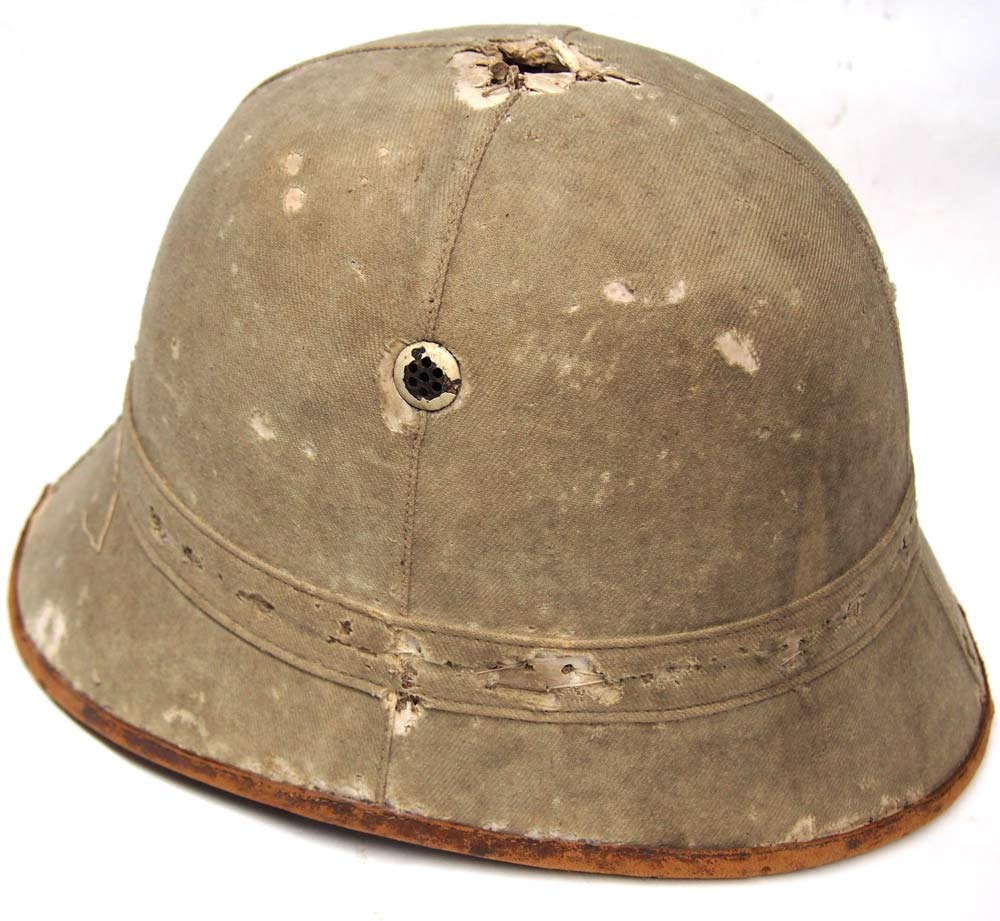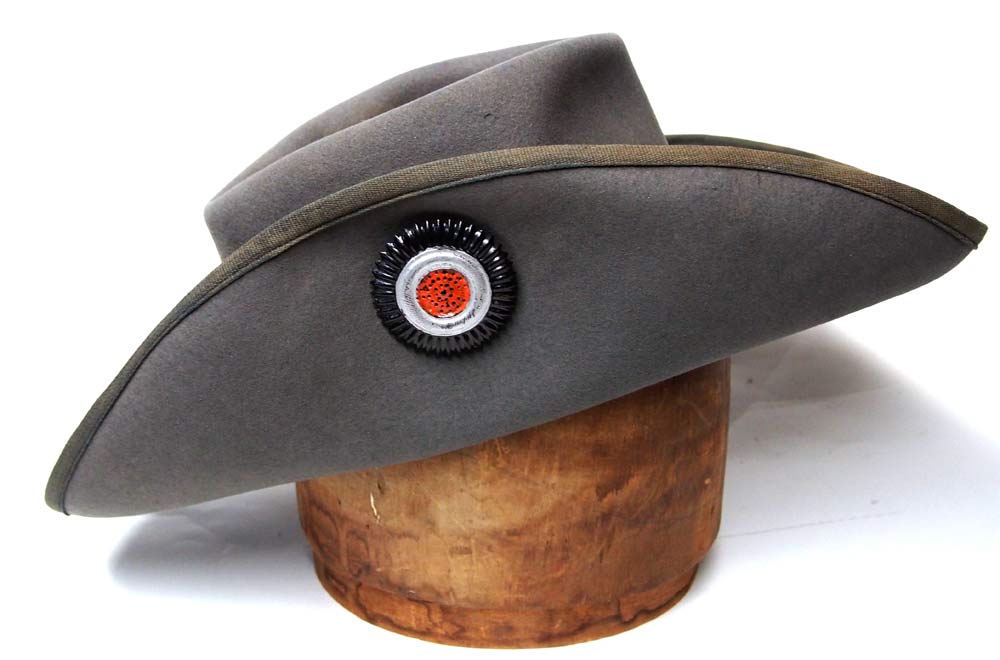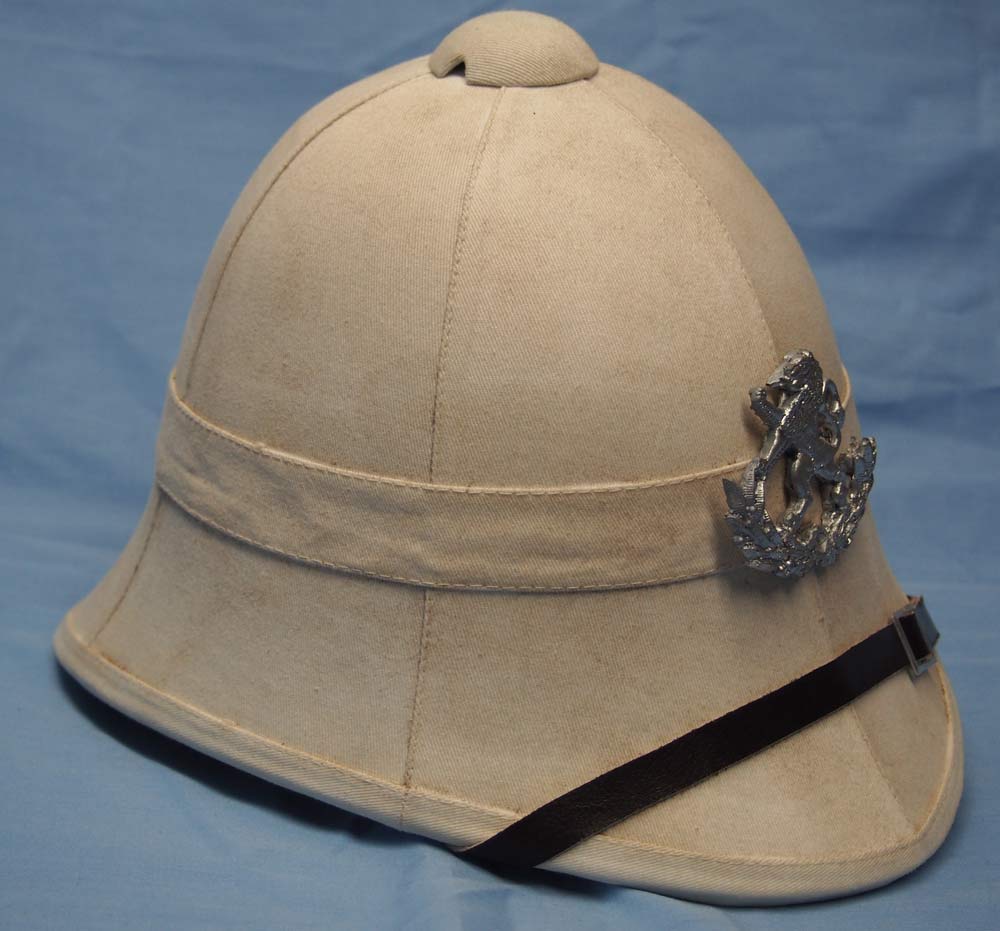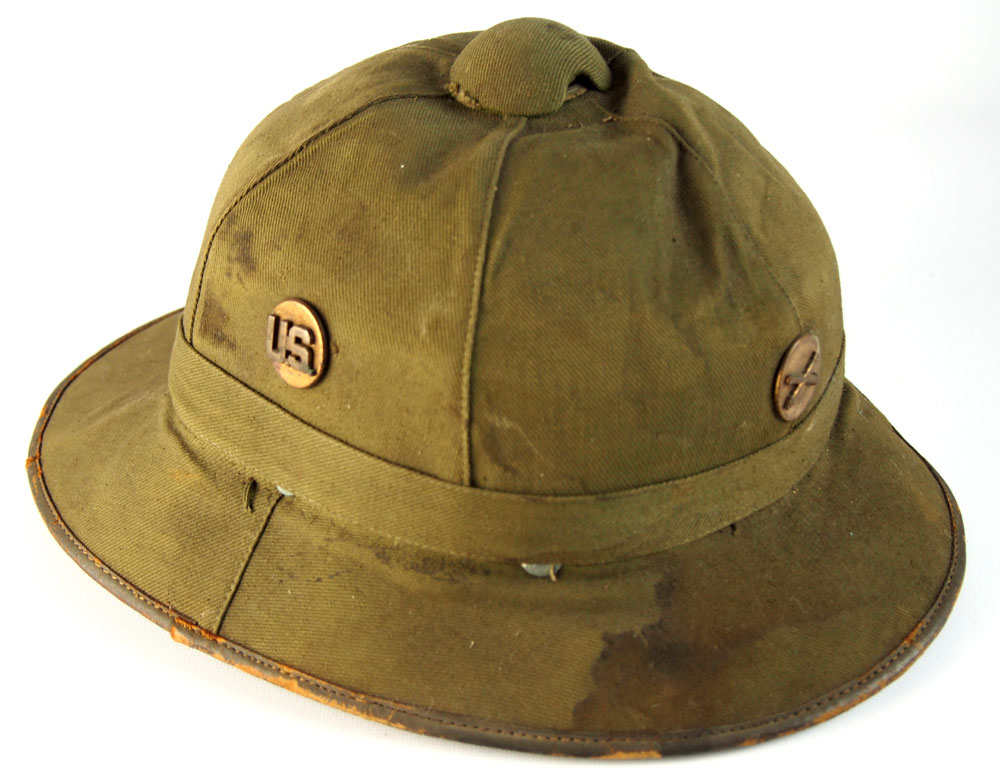Going through some of my Father’s WWII snap shots, there is one I find more evocative than the others, in which his ten man section is shown shortly after arrival in Egypt in June 1941 (see Figure 1). They were part of ‘B’ Company, 1st Battalion, The Hampshire Regiment. A group of men which, with losses and additions, he was to fight with, almost continually until mid-1944 when he was seriously wounded during the Normandy Landings.

Figure 1. One ‘section’ of B Company, 1st Battalion, Hampshire Regiment, and some locals, shortly after the soldiers arrival in Egypt, 13 June 1941. Stanley Lewis Saunders (my Father) is marked with an ‘x’. According to my Father they were issued with the ‘pith’ helmets on arrival, but it was soon realized that in the prevailing mobile and fluid conditions the infantry had to have light weight and compact kit. Having two large rigid helmets, i.e. the Mk II steel helmet and a ‘Wolseley’ was impractical. So the Wolseley’s issue to foot soldiers was short lived and they were soon replaced by the slouch hat. It can just be made out that most have puggarees.

 While the sun/pith helmet originated in India, as we have noted the British were not alone in considering the
While the sun/pith helmet originated in India, as we have noted the British were not alone in considering the 

 Sun/pith helmets in the movies have often been hit or miss – and in some cases have even caused some confusion regarding fact vs. fiction. Most notably are the helmets in the 1964 epic Zulu, which featured helmet plates on the front. Because of this movie many new collectors expect that helmet plates were generally worn in all stations abroad (The helmet plate was authorized only for the so-called Mediterranean stations).
Sun/pith helmets in the movies have often been hit or miss – and in some cases have even caused some confusion regarding fact vs. fiction. Most notably are the helmets in the 1964 epic Zulu, which featured helmet plates on the front. Because of this movie many new collectors expect that helmet plates were generally worn in all stations abroad (The helmet plate was authorized only for the so-called Mediterranean stations).
